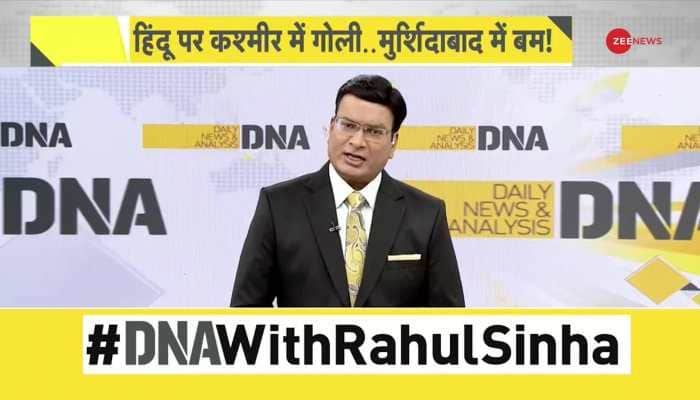Common minimum programme for aam aadmi: any takers?
The two decades of economic reforms in India present a saga of missed opportunities.
 Ajay Vaishnav / Zee Research Group
In the last few weeks, the public policy discourse in India has been inundated with personality centric debates (read NaMo versus RaGa) on best course of action. While political talking heads are busy showing big picture to voters, the aam aadmi in this country is still struggling everyday to make both ends meet. The absence of State in many areas of public life is glaring as we approach 67th year of independence. Even as our political parties prepare to slug it out at the hustings, there is an urgent need to achieve consensus over a common agenda for the aam aadmi which should guide policy action.
There is a need to impart a sense of urgency as the two decades of economic reforms in India present a saga of missed opportunities and piecemeal and half-hearted attempts to liberalise the economy. Rather than pursuing them in a planned and sustained manner, reform measures have often been launched primarily to avert the onset of a bigger crisis. Compare that to neighbouring China where economic reforms have become a firmly entrenched idea since 1979 and have been pursued vigorously. In India, the failure invariably lies with our political parties starting with the ruling Congress which has failed to evolve a broader consensus over key economic reforms agenda.
The ruling party’s blatant pursuit of populism has produced counter-populism at the state level ruled by other parties. The whole focus of governance has shifted towards giving handouts in the form of welfare schemes and employment guarantees rather than job creation through productive assets for long-term durable growth. The slide is apparent with retarding economic growth rates, high inflation and the latest record level of current account deficit in the October-December 2012 quarter.
Unless our politicos change their tack, there is a high risk that India will slip into stagflation and may squander gains made in the last two decades. It calls for evolving a broad political consensus over key economic reforms issue and pushing it hard for economic recovery and rekindling an era of high growth rates. In fact, a political party championing laissez faire and greater economic freedom is highly desirable in India.
The upcoming election season beginning with Assembly Elections in Karnataka in May to the General Elections in 2014 offers an opportunity to all political parties to make a paradigm shift towards a development oriented discourse over politics of identity. New age voters will throng polling booths in large numbers if the message from political parties resonates with their economic aspirations.
There is an urgent need to create a common minimum programme (CMP) for the aam aadmi. Zee Research Group (ZRG) thought of outlining the areas where political parties can forge a common ground and works towards the benefit of the common man. These are:
Taming food inflation via supply side reforms: For the last two to three years, food inflation has become one beast beyond the control of our policymakers. Post 2008-09, it has averaged 10 percent till December 2012. Given an average Indian household still spends close to 50 per cent of its expenditure on food, high inflation is having a vicious impact on their ability to purchase and save more, especially when the average income hasn’t grown steadily. Rising fuel costs haven’t helped the matters as well. While the Reserve Bank of India has done its bit by tightening liquidity in the economy, supply side bottlenecks along with the presence of too many middlemen have pushed up prices. Unless RBI’s efforts are backed with proper supply side reforms including in the agri sector, there is little possibility that India will be able to tame inflation.
Pushing agricultural reforms: Despite high-pitched campaign by our governments that they are pro-agriculture, the sector remains a low priority despite employing more than 60 per cent of the population. A cursory glance at the sector reveals that it is key to tame inflation, provide food security and enhance productivity and rural incomes. A revamped agri sector will, in turn, produce cascading effect on all other sectors and push the wheels of economic growth. Two issues requiring immediate attention are: reforming marketing and distribution of agricultural produce; second, the structure of ownership and leasing of land in the country.
In the first, the APMC Act needs amendments to allow big organised retailers to buy directly from farmers. It will, in turn, lead to bigger investments in the cold storage chains in the countryside. Likewise, farmers should be given complete freedom to sell perishable produce directly in the market. As for the second, the progressive decline in the average size of landholding in the country over the years (around 60 per cent of the households today possess less than a hectare of land for cultivation) has seriously affected the scale of operations, crop diversification and scope of aggregation of farm produce. Subsistence and marginal farming has unfortunately become the norm. The solution lies in legalising the leasing of agricultural land on long term basis through legislation and dispelling fears of landowners from “land to the tiller” an idea of the past.
FDI in multi-brand retail: A key part and parcel of supply side reforms is easing the norms for the entry of multi-brand retail giants. It’s been almost six months since the UPA put its very existence on the line to throw open the doors to foreign direct investment (FDI) in multi-brand retail. Six months and the government hasn’t received any proposal related to foreign direct investment in multi-brand retail so far. Clearly, all is not well with the format in which the reform has been carried out. Investors are deterred by stipulations which ostensibly seem to put more hurdles rather than clear the path for the entry of global multi-brand retail giants. While the permitted FDI limit has been kept at 51 per cent, conditions related to sourcing, state-level approvals et al add to investors’ woes. On top of it all, political opposition from major parties and their bellicose posturing flares up uncertainty.
Creation of a common market and tax reforms:
a) The Goods and Services Tax (GST): A key reform measure to simplify India’s tax structure, broaden the tax base and compliance, and to create a countrywide common market, the GST has been hanging fire since April 1, 2010. Announced in P Chidambaram’s previous stint as the finance minister in 2007-08, the deadline for GST’s roll out has been deferred twice since then, the latest being April 1, 2014. GST is facing stiff opposition from non-Congress ruled states as they see it as the Union government’s objective to strip states of their taxation powers and encroach on their domain. Despite offering the option of a phased roll out, consensus on GST continues to elude.
b) Direct Tax Code (DTC): This is yet another key tax reform experiencing delays due to controversial retrospective tax proposals. Introduced in Parliament in August 2010 by the current President and former finance minister Pranab Mukherjee, the proposed tax code was scheduled to replace the Income Tax Act of 1961 from April 2011 onwards. It was referred to a Parliamentary Standing Committee. The Bill then got deferred once again to April 2013 as there was a delay in submitting the report by the committee. Expected to usher in a new tax regime of transparency and greater compliance, the tax code was meant to be a combination of major tax relief and removal of most tax-exempted benefits. In his budget speech, the FM also mentioned the infamous General Anti Avoidance rule, or GAAR, saying that the modified provisions will be effective from April 1, 2016.
Sprucing infrastructure investment: A well-laid infrastructure connecting India’s key cities and rural markets will help in easing supply side constraints. India needs an estimated $1 trillion over the next five years to meet its infrastructure investment as envisaged in the 12th Plan. But, the Economic Survey has pointed out that new investments have been drying up across sectors, partly as a consequence of rising stalled projects that reduce the ability of firms to start new ones. Almost 80 per cent of the stalled projects are in key infrastructure areas such as electricity, roads and telecommunications. The investment rate had declined to 35 per cent in 2011-12 from 36.8 per cent the previous year. Gross domestic savings too have fallen sharply to just over 30 per cent in 2011-12. To revive infrastructure spending, the government needs to reduce its own running costs and increase spending on mega-projects rather than big-ticket populist schemes.
Augmenting social capital via non-populism: There’s no denying that India needs to politically intervene and initiate social-welfare schemes for its populace – a large number of who remain steeped deep in poverty and struggle for two square meals a day. And those who are at margins face structural discrimination whether it is caste, class, creed or gender. The state must extend its helping hand to all such people with positive intervention rather than inculcating a patronising attitude. The state’s role should be to impart skills development, training, creating conducive conditions for entrepreneurship and removing bureaucratic and structural obstacles to that rather than pushing for unproductive assets.
Ajay Vaishnav / Zee Research Group
In the last few weeks, the public policy discourse in India has been inundated with personality centric debates (read NaMo versus RaGa) on best course of action. While political talking heads are busy showing big picture to voters, the aam aadmi in this country is still struggling everyday to make both ends meet. The absence of State in many areas of public life is glaring as we approach 67th year of independence. Even as our political parties prepare to slug it out at the hustings, there is an urgent need to achieve consensus over a common agenda for the aam aadmi which should guide policy action.
There is a need to impart a sense of urgency as the two decades of economic reforms in India present a saga of missed opportunities and piecemeal and half-hearted attempts to liberalise the economy. Rather than pursuing them in a planned and sustained manner, reform measures have often been launched primarily to avert the onset of a bigger crisis. Compare that to neighbouring China where economic reforms have become a firmly entrenched idea since 1979 and have been pursued vigorously. In India, the failure invariably lies with our political parties starting with the ruling Congress which has failed to evolve a broader consensus over key economic reforms agenda.
The ruling party’s blatant pursuit of populism has produced counter-populism at the state level ruled by other parties. The whole focus of governance has shifted towards giving handouts in the form of welfare schemes and employment guarantees rather than job creation through productive assets for long-term durable growth. The slide is apparent with retarding economic growth rates, high inflation and the latest record level of current account deficit in the October-December 2012 quarter.
Unless our politicos change their tack, there is a high risk that India will slip into stagflation and may squander gains made in the last two decades. It calls for evolving a broad political consensus over key economic reforms issue and pushing it hard for economic recovery and rekindling an era of high growth rates. In fact, a political party championing laissez faire and greater economic freedom is highly desirable in India.
The upcoming election season beginning with Assembly Elections in Karnataka in May to the General Elections in 2014 offers an opportunity to all political parties to make a paradigm shift towards a development oriented discourse over politics of identity. New age voters will throng polling booths in large numbers if the message from political parties resonates with their economic aspirations.
There is an urgent need to create a common minimum programme (CMP) for the aam aadmi. Zee Research Group (ZRG) thought of outlining the areas where political parties can forge a common ground and works towards the benefit of the common man. These are:
Taming food inflation via supply side reforms: For the last two to three years, food inflation has become one beast beyond the control of our policymakers. Post 2008-09, it has averaged 10 percent till December 2012. Given an average Indian household still spends close to 50 per cent of its expenditure on food, high inflation is having a vicious impact on their ability to purchase and save more, especially when the average income hasn’t grown steadily. Rising fuel costs haven’t helped the matters as well. While the Reserve Bank of India has done its bit by tightening liquidity in the economy, supply side bottlenecks along with the presence of too many middlemen have pushed up prices. Unless RBI’s efforts are backed with proper supply side reforms including in the agri sector, there is little possibility that India will be able to tame inflation.
Pushing agricultural reforms: Despite high-pitched campaign by our governments that they are pro-agriculture, the sector remains a low priority despite employing more than 60 per cent of the population. A cursory glance at the sector reveals that it is key to tame inflation, provide food security and enhance productivity and rural incomes. A revamped agri sector will, in turn, produce cascading effect on all other sectors and push the wheels of economic growth. Two issues requiring immediate attention are: reforming marketing and distribution of agricultural produce; second, the structure of ownership and leasing of land in the country.
In the first, the APMC Act needs amendments to allow big organised retailers to buy directly from farmers. It will, in turn, lead to bigger investments in the cold storage chains in the countryside. Likewise, farmers should be given complete freedom to sell perishable produce directly in the market. As for the second, the progressive decline in the average size of landholding in the country over the years (around 60 per cent of the households today possess less than a hectare of land for cultivation) has seriously affected the scale of operations, crop diversification and scope of aggregation of farm produce. Subsistence and marginal farming has unfortunately become the norm. The solution lies in legalising the leasing of agricultural land on long term basis through legislation and dispelling fears of landowners from “land to the tiller” an idea of the past.
FDI in multi-brand retail: A key part and parcel of supply side reforms is easing the norms for the entry of multi-brand retail giants. It’s been almost six months since the UPA put its very existence on the line to throw open the doors to foreign direct investment (FDI) in multi-brand retail. Six months and the government hasn’t received any proposal related to foreign direct investment in multi-brand retail so far. Clearly, all is not well with the format in which the reform has been carried out. Investors are deterred by stipulations which ostensibly seem to put more hurdles rather than clear the path for the entry of global multi-brand retail giants. While the permitted FDI limit has been kept at 51 per cent, conditions related to sourcing, state-level approvals et al add to investors’ woes. On top of it all, political opposition from major parties and their bellicose posturing flares up uncertainty.
Creation of a common market and tax reforms:
a) The Goods and Services Tax (GST): A key reform measure to simplify India’s tax structure, broaden the tax base and compliance, and to create a countrywide common market, the GST has been hanging fire since April 1, 2010. Announced in P Chidambaram’s previous stint as the finance minister in 2007-08, the deadline for GST’s roll out has been deferred twice since then, the latest being April 1, 2014. GST is facing stiff opposition from non-Congress ruled states as they see it as the Union government’s objective to strip states of their taxation powers and encroach on their domain. Despite offering the option of a phased roll out, consensus on GST continues to elude.
b) Direct Tax Code (DTC): This is yet another key tax reform experiencing delays due to controversial retrospective tax proposals. Introduced in Parliament in August 2010 by the current President and former finance minister Pranab Mukherjee, the proposed tax code was scheduled to replace the Income Tax Act of 1961 from April 2011 onwards. It was referred to a Parliamentary Standing Committee. The Bill then got deferred once again to April 2013 as there was a delay in submitting the report by the committee. Expected to usher in a new tax regime of transparency and greater compliance, the tax code was meant to be a combination of major tax relief and removal of most tax-exempted benefits. In his budget speech, the FM also mentioned the infamous General Anti Avoidance rule, or GAAR, saying that the modified provisions will be effective from April 1, 2016.
Sprucing infrastructure investment: A well-laid infrastructure connecting India’s key cities and rural markets will help in easing supply side constraints. India needs an estimated $1 trillion over the next five years to meet its infrastructure investment as envisaged in the 12th Plan. But, the Economic Survey has pointed out that new investments have been drying up across sectors, partly as a consequence of rising stalled projects that reduce the ability of firms to start new ones. Almost 80 per cent of the stalled projects are in key infrastructure areas such as electricity, roads and telecommunications. The investment rate had declined to 35 per cent in 2011-12 from 36.8 per cent the previous year. Gross domestic savings too have fallen sharply to just over 30 per cent in 2011-12. To revive infrastructure spending, the government needs to reduce its own running costs and increase spending on mega-projects rather than big-ticket populist schemes.
Augmenting social capital via non-populism: There’s no denying that India needs to politically intervene and initiate social-welfare schemes for its populace – a large number of who remain steeped deep in poverty and struggle for two square meals a day. And those who are at margins face structural discrimination whether it is caste, class, creed or gender. The state must extend its helping hand to all such people with positive intervention rather than inculcating a patronising attitude. The state’s role should be to impart skills development, training, creating conducive conditions for entrepreneurship and removing bureaucratic and structural obstacles to that rather than pushing for unproductive assets.










